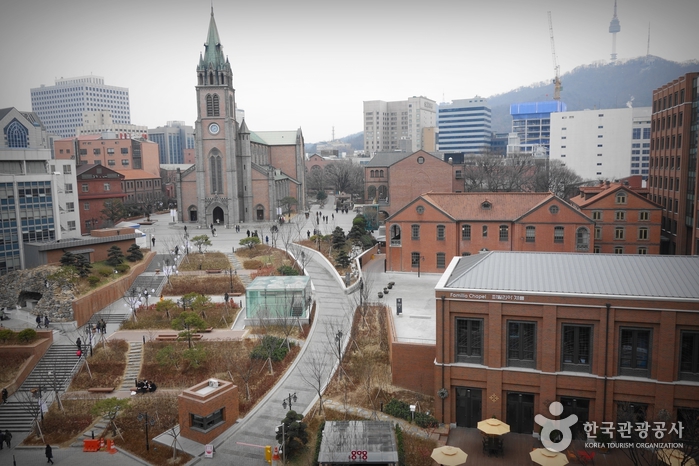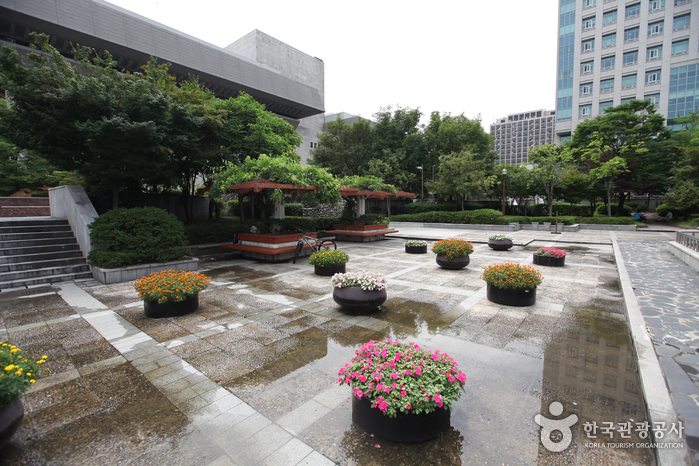Artee Riders Club (아띠인력거)
Artee Riders Club (아띠인력거)
– Homepage
arteepedicab.com/
– Tel
+82-1666-1693
Artee Riders Club is the first company that offers rickshaw tours in the nation. Not only do you get to ride on the rickshaw to tour around popular attractions including Bukchon Village, Seochon Village, the rickshaw tour guides you to the smaller alleys as well. Travelers to Bukchon Village may have their belongings or luggage stored at the center, and individual’s insurance as well as a complimentary drink are offered.
– Address : 43, Bukchon-ro 5-gil, Jongno-gu, Seoul
※ Presentation Information
– Capacity
2 adults to 1 rickshaw
– Age Range
Open to visitors of all ages
– Information and Guides
• 1330 Travel Hotline: +82-2-1330
(Korean, English, Japanese, Chinese)
• For more info: +82-1666-1693
– Parking
N/A (Please use nearby parking facilities)
– Day Off
Tuesdays
– Operating Hours
10:00-18:00 (Break time 12:00-13:00)
– Facility Utilization Fees
Seo-bukchon Village Romance Course 60 min: Adults 30,000 won / Preschoolers (ages 4-6) 15,000 won
Dong-bukchon Village History Course 60 min: Adults 30,000 won / Preschoolers (ages 4-6) 15,000 won
Seochon Artistic Course 60 min: Adults 30,000 won / Preschoolers (ages 4-6) 15,000 won
Cheonwadae Course 60 min: Adults 50,000 won / Preschoolers (ages 4-6) 25,000 won
Bukchon VIP Course 60 min: Adults 50,000 won / Preschoolers (ages 4-6) 25,000 won
Bukchon, Seochon Cherry Blossom Course 60 min: Adults 40,000 won / Preschoolers (ages 4-6) 20,000 won
– Interpretation Services Offered
English / Chinese languages available

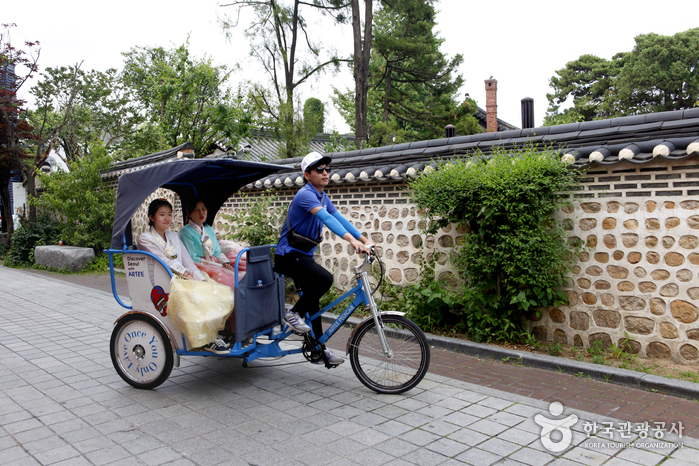

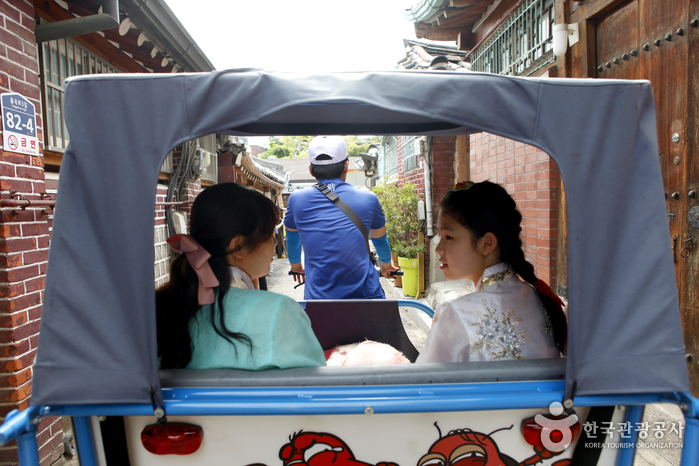

◎ Nearby Tourism Infobox
⊙ Bukchon Pharmacy [Tax Refund Shop] (북촌약국)

–
⊙ Jeongdok Library (서울특별시교육청 정독도서관)
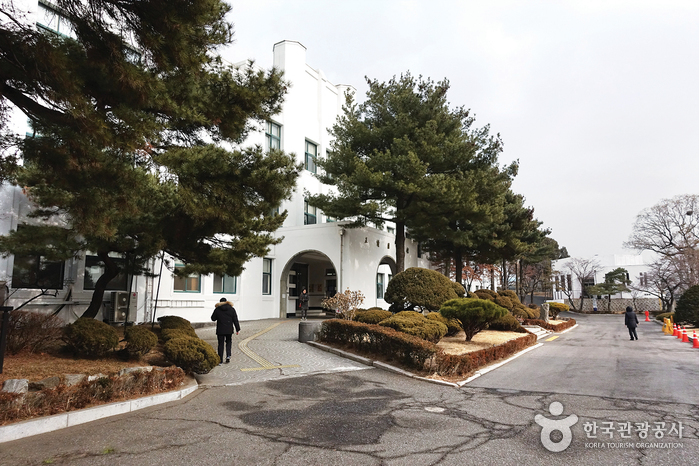
– Homepage
jdlib.sen.go.kr
– Tel
+82-2-2011-5799
Jeongdok Library opened in January 1977 on the former site of the Gyeonggi High School in Bukchon, Jongno-gu, Seoul. As a public city library, it boasts little under half a million books and 16,300 reference materials. The Seoul Education Museum in the library houses a collection of 12,000 reference materials.
In addition to basic library functions (lending books and offering archives and reading rooms to the public), the library runs various cultural programs such as monthly lectures by invited authors, photo exhibitions, reading seminars, and music/dance performances.
⊙ Tea Therapy (티테라피)
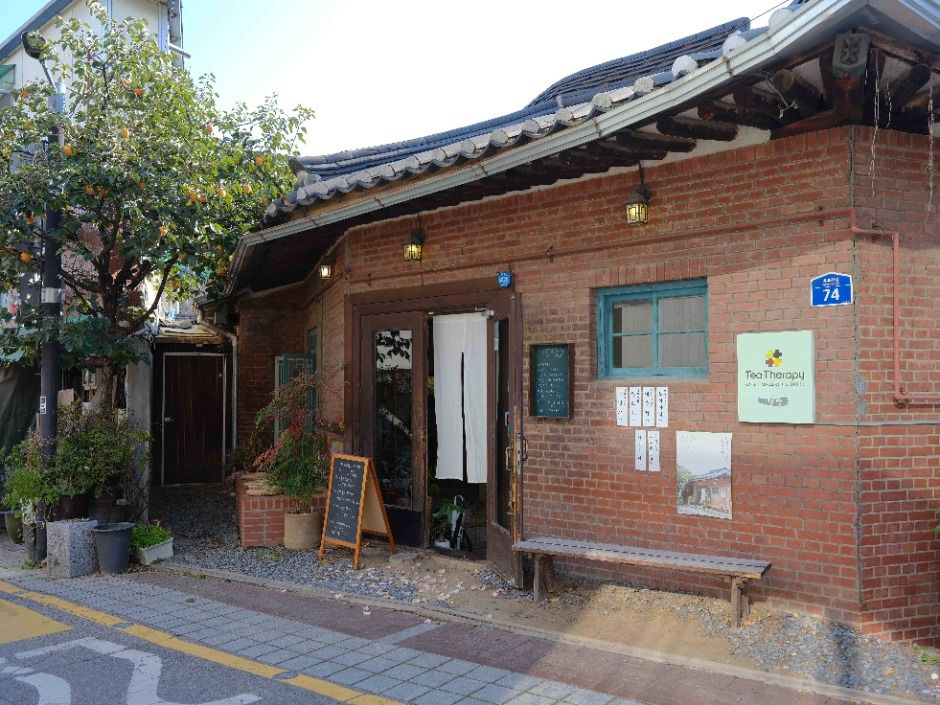
– Tel
+82-2-730-7507
Located in Jongno-gu, Seoul, Tea Therapy can be of help to those who chronically feel unwell even though they do not have any serious diseases that need to be treated. It is a place where medicinal herbal teas, which once seemed difficult to enjoy, can be enjoyed without hassle and in a unique way. The teas found at Tea Therapy can be brewed within three minutes, similar to herbal teas found in other countries, and are both delicious and good for your health. Tea Therapy recommends tea through testing so even novices can have fun selecting teas that suit them. Tea products are sold here as well, allowing you to enjoy the same flavors at home.
⊙ Hanboknam (한복남)
View detailed guide on Korea Trip Guide →

– Homepage
www.hanboknam.com
– Tel
+82-10-6485-8507
Started in Jeonju in 2012, Hanboknam strived to promote the beauty of hanbok, earning recognition by the Ministry of Culture, Sports and Tourism in 2015. Following this, Hanboknam opened a hanbok exhibition and rental shop in the Bukchon area of Seoul in 2016. The shop provides customers with numerous styles of hanbok, from royalty to beggars. The rental shop also offers various accessories to pair with the different hanbok for a complete look.
⊙ Aromind (아로마인드)
View detailed guide on Korea Trip Guide →
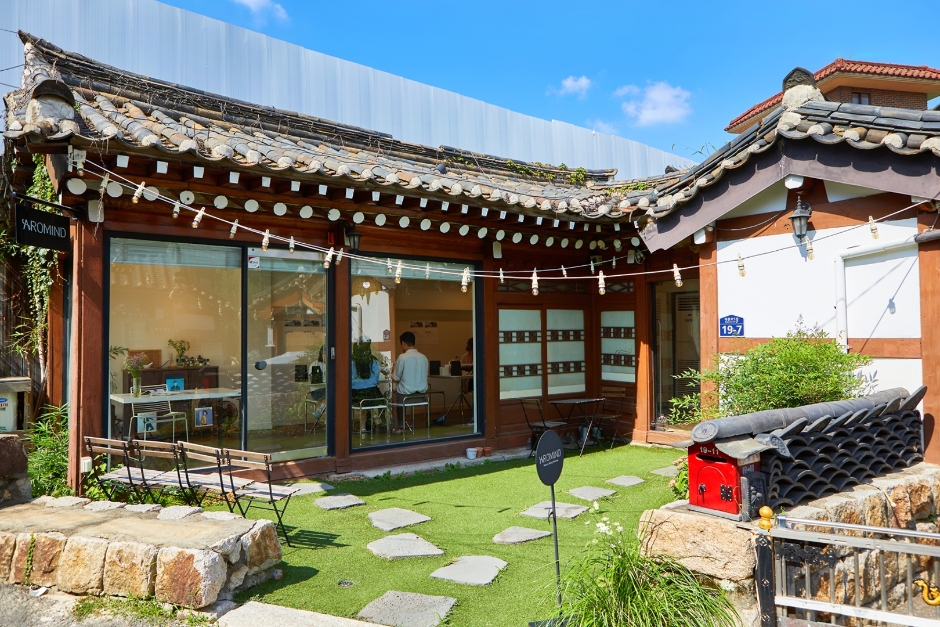
– Homepage
www.aromind.co.kr
Aromind is a perfume workshop that offers a perfume-making experience with a professional perfumer in a quiet hanok building. Visitors can create their own one-of-a-kind perfume by choosing three out of 30 different scent options that change on a seasonal basis. A perfume one-day class is held for one to eight people for one to one and a half hours. The fee for the experience includes a 50 ml product and a 10 ml sample. They also offer the class in Korean with English interpretation when there non-Korean speaking participants. Aromind is the perfect place to create your own scent to associate your memory of Korea.
⊙ Bukchon Hanok Village Gamgodang Street (북촌한옥마을 감고당길)
View detailed guide on Korea Trip Guide →

– Homepage
https://tour.jongno.go.kr/
An alley with cute cafes and galleries
This is the road that appeared in the last episode and the flashback scene where Choi Ung (played by Choi Woosik) and Kuk Yeonsoo (played by Kim Dami) got drunk. Behind the Seoul Craft Museum in Bukchon Hanok Village, it extends for about 440m from Poongmoon Girls’ High School to Jeongdok Library. There are many pretty cafes and galleries on the cozy road, and there are also craft markets open, so there is plenty to look around. The alley where Kuk Yeonsoo walked with the drunken Choi Ung on her back is Yunboseon Street in the middle of Gamgodang Street. It stretches along the hill between narrow tiled walls and stone walls, giving off a unique atmosphere.
⊙ Hanji House (한지가헌)
– Homepage
www.kcdf.or.kr/hanji/
www.instagram.com/hanji.HOUSE
Hanji House was founded to pass on the cultural heritage of hanji, traditional Korean paper, as well as to promote its excellence and uses in everyday life. The center is operated by Korea Craft & Design Foundation, and offers a variety of programs that consist of exhibitions, hands-on activities, classes, and marketing hanji products. On the first floor is Hanji Showroom, where various exhibitions take place to showcase hanji of the past and the present. The basement floor comprises Hanji Open Archive, Hanji Print Studio, and Hanji Workroom, where most of the hands-on activities and classes are held. Hanji House also offers a docent program for exploring the whole area.
⊙ Tanello Jewellery [Tax Refund Shop] (타넬로(모두디자인컴퍼니))
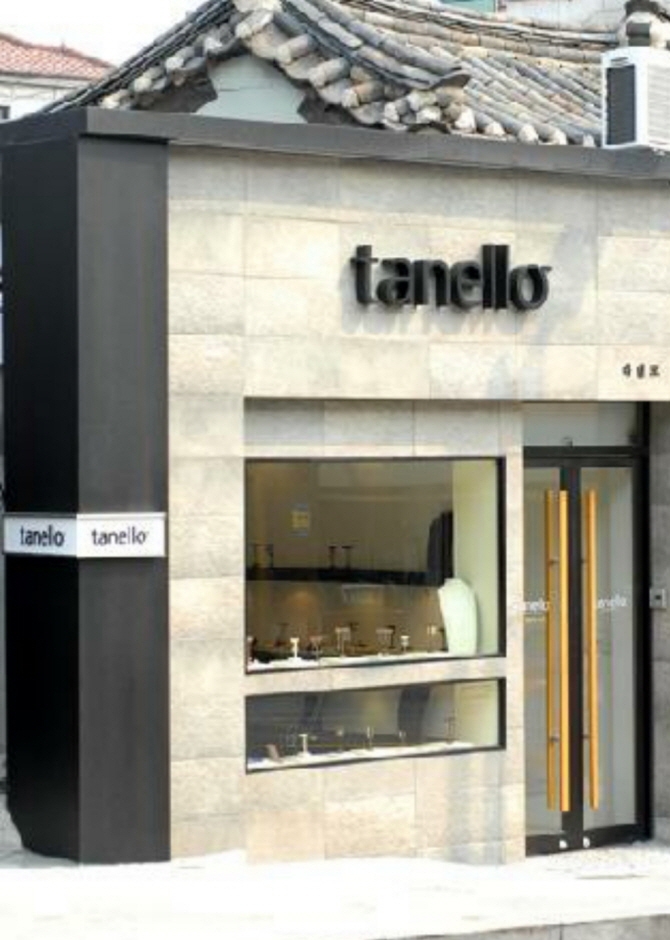
–
⊙ Baek In-je House (백인제가옥)
View detailed guide on Korea Trip Guide →
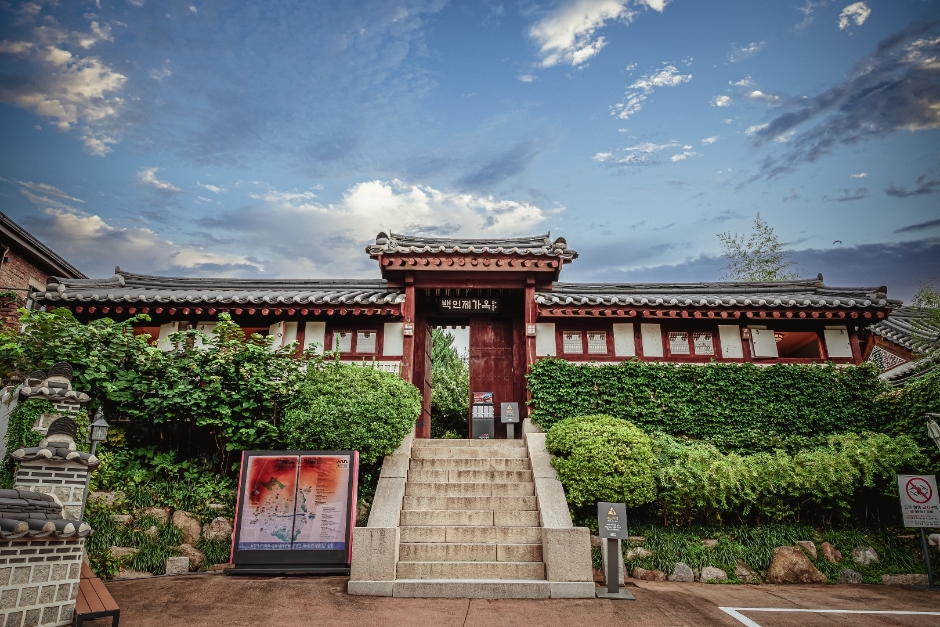
– Homepage
www.museum.seoul.kr
– Tel
+82-2-724-0200
Baek In-je House, located in Bukchon Hanok Village, is a hanok built during the Japanese administration period that portrays modern hanok features. The structure consists of a main room offering a good view of the whole village, spacious bedrooms, a large garden, and annex buildings. As it maintains the beauty of a traditional hanok while incorporating the modern trend of its time, Baek In-je House is considered to be highly valuable in means of both architecture and history, representing the Bukchon Hanok Village together with Yun Bo-seon House.
Baek In-je House was built from black pine, which was first introduced in Seoul during the Gyeongseong Expo in 1907, distinguishing itself from other upper-class houses of its time. Unlike other traditional hanok designs that separate the main building from the other rooms, Baek In-je House connects the two with a hallway, allowing convenient access between the two structures. The house also consists of a Japanese-style hallway and floor mat rooms, reflecting the interior trends of that period. Baek In-je House is also unique in that the main room is partially built as a two-story structure, a style that was never seen in any traditional hanok built during the Joseon period.
